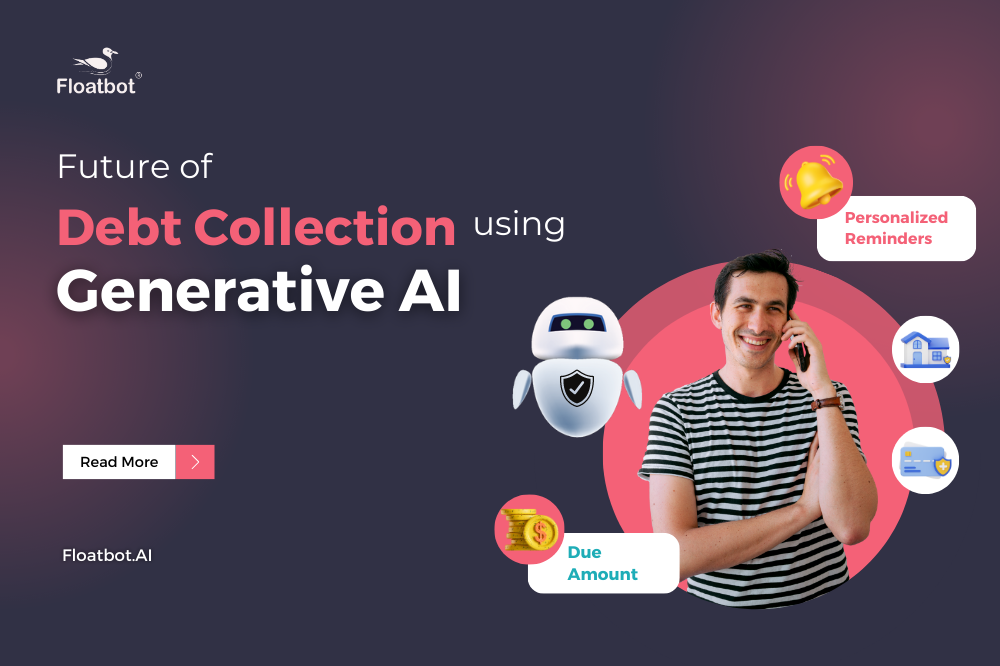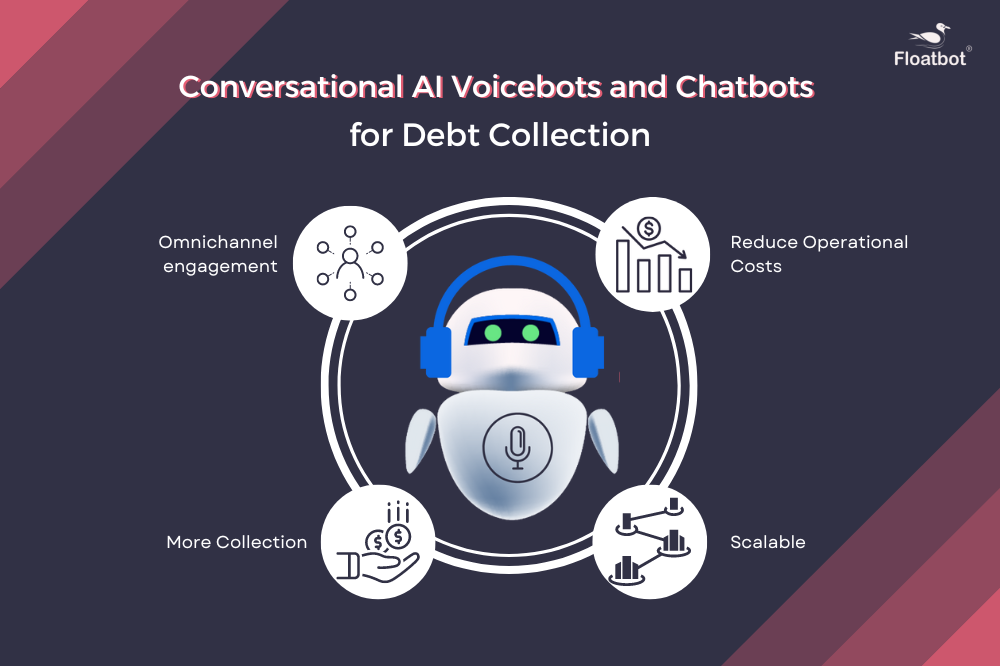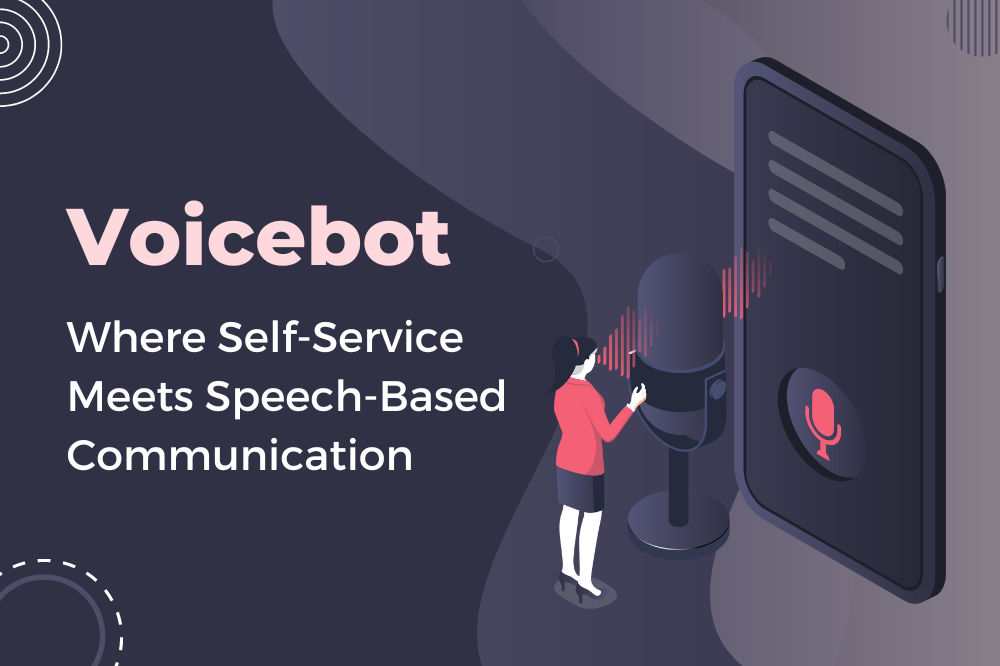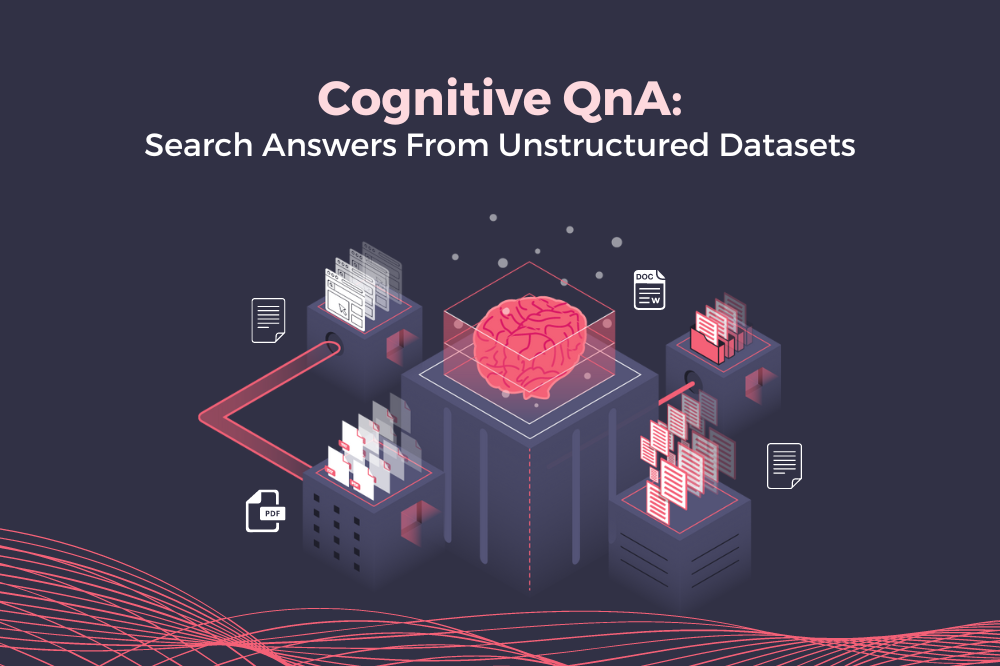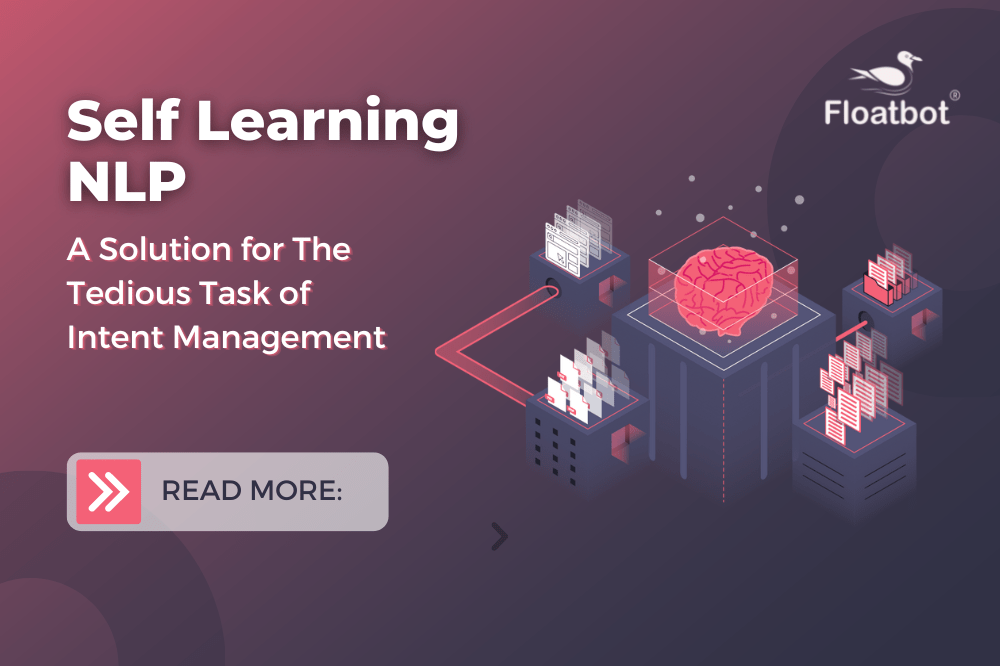What is Conversational AI?
Discover how a conversational AI platform automates support, boosts CSAT, and delivers natural human-like conversations across channels. Learn the benefits now.
- Apr 09 2024

Whenever you interact with a bot, either on chat or voice, you’re conversing with a Conversational AI. They interact in a human-like manner, by taking human conversations as inputs, then processing it, and responding back.
Conversational AI includes technologies such as machine learning, natural language processing & understanding, text-to-speech (TTS), and automatic speech recognition.
Overall conversational AI is a combination of Natural language processing (NLP) and machine learning (ML).
The most common examples are conversational AI Chatbot & Voicebot. And the key differentiator of a conversational AI application is the mode of communication, for instance, the mode of communication for a chatbot can be chat and for a voice bot it will be voice.
Natural language processing (NLP)
Natural language processing detects and analyzes the input language and generates output based on the user intent. Input is deciphered by NLU (natural language understanding) that a machine can process and return the response back to NLU.
Once the response is detected by the AI engine, Natural language generation(NLG) - a component of NLP formulates the user response.
If the input is speech-based input, then the ASR (Automatic speech recognition) comes into play which recognizes the speech and transcripts the speech into text that a machine can understand.
Machine learning (ML)
Machine learning is a part of artificial intelligence that learns from every user input and user behavior, as the data increases with the increased number of user inputs, it trains itself to respond more accurately to the user queries.
With the help of conversational AI applications such as Chatbots and Voicebots are deployed to automate multiple use-cases for businesses that help businesses to get the most out of Artificial Intelligence.
How conversational AI works?
Think of conversational AI as a brain of the machine, that takes the input, transforms the query in a way a machine can process, processes the response, and formulates the answer imitating a human language.
Once the user query comes from the application, NLP takes the user input to decipher into machine language and transfers it to AI, AI matches the user intent and the response is sent back to the NLP, NLG generates the output in a human language, and send it to the application. The whole process of user query generation and response takes a fraction of a second.
SELF-SERVICE AI AGENTS
Conversational AI enables self-service AI agents to empower customers to access information & services quickly without human intervention. Available 24/7, these AI agents provide instant assistance and efficiently resolve queries. Whether customers need product information, troubleshooting help, or account management support, self-service AI agents offer a seamless and convenient experience.
Through intuitive interfaces like chatbots or voice assistants, customers can engage in smooth conversations, mirroring human interaction. This improves user satisfaction, reduces wait times, & boosts operational efficiency for businesses.
Benefits of conversational AI
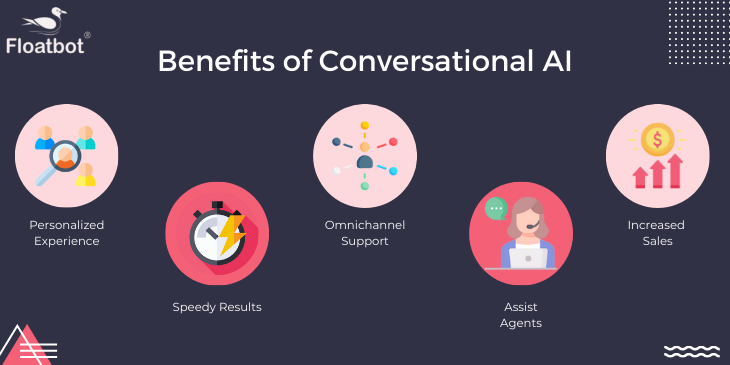
Conversational AI benefits are plentiful for businesses. They help in automation for multiple business use cases. The technology revolution has helped businesses to develop and deploy top-notch applications to various customer-facing channels.
PERSONALIZED EXPERIENCE
AI Chatbots and Voicebots have the ability to offer personalized and custom experiences to a particular user based on their previous interactions.
QUICK RESPONSES
Gone are the days when users would wait in long queues and keep on punching numbers. With Conversational AI, users can get real-time responses that are accurate and to the point.
OMNICHANNEL AND MULTILINGUAL SUPPORT
Most Conversational AI can interact with the user on the channel they prefer and in their native language.
Call, Text/SMS, WhatsApp, Facebook Messenger, MS Teams, and Mobile Apps are all supported. What's more, is that one can seamlessly switch between text and voice if need be.
ASSIST AND HELP HUMAN AGENTS
Conversational AI can assist human agents in serving customers more efficiently by suggesting appropriate answers, fetching information, and scheduling appointments.
INCREASED SALES
By effectively communicating promotional sales, offers, and deals and offering a delightful customer experience, sales are bound to increase and help in the growth and expansion of business.
Challenges of conversational AI and how to overcome those challenges
With the technology transformation, there is always the possibility of loopholes and challenges. Challenges differ in terms of use cases and their implementation. Here are a few of the common challenges faced while implementing conversational AI.
Complex user queries
For an AI application to give accurate responses it is important to train it over time. But for the complex queries that are out of context or that are long for an application to understand than those queries cannot be addressed properly by the system.
SPEECH VARIATION
Tone, sarcasm, slang, jargon, and noise are some of the factors that affect the performance of Conversational AI. Different regions have variations and accents too, these take time to be processed and stored for future responses.
PRIVACY & SECURITY
As with any other digital medium, storage of user information for processing and improvements in ML and NLP may raise concerns about user privacy. Not everyone is comfortable with their voice samples being stored online. This needs to be addressed with proper regulations and data protection laws.
How you can incorporate conversational AI into your business
As a business owner, you know how important it is to prioritize customer experience and satisfaction. Conversational AI can help your business with both.
Deploying conversational AI is not restricted to any use case or scenario. It can work in any kind of scenario for your business, whether it is customer-facing or internal. It has the capability to automate any kind of task or process that needs constant human intervention.
Especially for customer-facing channels, customers love to have conversations with brands nowadays. The most common conversational AI applications are chatbots & voice bots.
Here are a few of the steps you can follow before considering conversational AI
- Finalize the use case or scenario for which you want an AI.
- Jot down all the possible queries and user flow for the scenario that you want to address.
- Research and finalize the best AI tool available that can help you with the process. (If possible go for a no-code platform or DIY platform).
- Create your own conversation AI application and test it rigorously.
- Train it over time to make the responses accurate.
Conversational AI use-cases
There can be any number of use cases when it comes to conversational AI and automation. Here are the most common use cases for a business.
Customer Support & Service
Customer support is the most common and most implemented use case for a business. Conversational AI is driven the most for the customer-facing channels and it is worth it. An AI application is capable enough to serve customers 24x7. It can respond to customer queries in no time.
Sales & Marketing
When it comes to customer-facing channels, marketers are not behind in their marketing game with an AI application, AI helps a brand to connect with customers and market their products & services well. It also helps understand their customer's needs & wants based on their behavior with the application.
User Engagement
User engagement is very important for qualifying leads. An AI application can help a business drive more user engagement by providing them with the required information. Helping all the prospects 24x7 creates a positive impact on a business to be available 24x7 for their queries and this builds trust.
Surveys
An AI application can also be useful to replace traditional boring forms with a conversational approach that is more interactive. This increases the chances of more user participation in the surveys than the number of participants for a traditional form filling.
IoT Devices
IoT devices are all over the place, and people like to use them on an everyday basis. An AI application that is available for people on their favorite devices makes it easy for a business to connect with customers.
PRODUCT RECOMMENDATIONS
Conversational AI can analyze user preferences, behavior, and past interactions to provide personalized product recommendations, enhancing the shopping experience and increasing sales conversion rates.
INTERNAL OPERATIONS
Assist employees with internal tasks such as IT support, HR inquiries, facilities management, and internal communications, improving operational efficiency and productivity within organizations.
LEAD QUALIFICATION
Engage with leads in a conversational manner to qualify them based on their interests, preferences, and intent, enabling sales teams to prioritize high-quality leads and improve lead conversion rates.
TRAINING AND ONBOARDING
Provide training modules, onboarding assistance, and knowledge sharing resources to employees in a conversational format, assisting continuous learning and skill development within organizations.
INDUSTRIES WHERE CONVERSATIONAL AI ARE MAKING THE IMPACT
CONTACT CENTERS
The main use of conversational AI is to automate customer support. You can launch AI-Powered Voicebots and Chatbots on customer-facing channels to assist them 24x7.
Also, Conversational AI can assist customer agents to provide a delightful customer experience. They can also be helpful in screening calls and lead generation.
BFSI
By providing 24x7 assistance, enabling faster transactions, generating leads, streamlining core banking services, automating claim processes, and aiding in the prevention of fraudulent claims, conversation AI helps immensely in the BFSI sector.
IOT
Smart TV, Google Now, Alexa, and Siri are some of the practical implementations and examples of Conversational AI in the IoT domain.
Future of conversational AI
People love to connect with brands and that is the reason why conversational AI is widely popular these days. By 2030, the global conversational AI market size is projected to reach $32.62 billion. With the increased market size there is a lot of scope for technological advancement and improvements that will help improve overall customer experience with AI and will also be able to solve a lot of real-time problems that still need human intervention. With that being said, Conversational AI future is bright for sure.
FLOATBOT.AI
Elevate customer, employee, and contact center agent experience with Floatbot's all-in-one SaaS-based Generative AI-powered Conversational AI platform. Automate 80% of calls, chat, and emails with AI Agents, increase agent productivity by 50% with AI Agent Assist, and reduce bot training efforts by 98% with Cognitive Search. Trusted by top brands, Floatbot offers innovative conversational AI solutions for industries like banking, insurance, collections, BPOs and more. Schedule a demo today or Start your free trial now.


